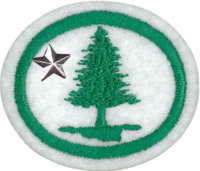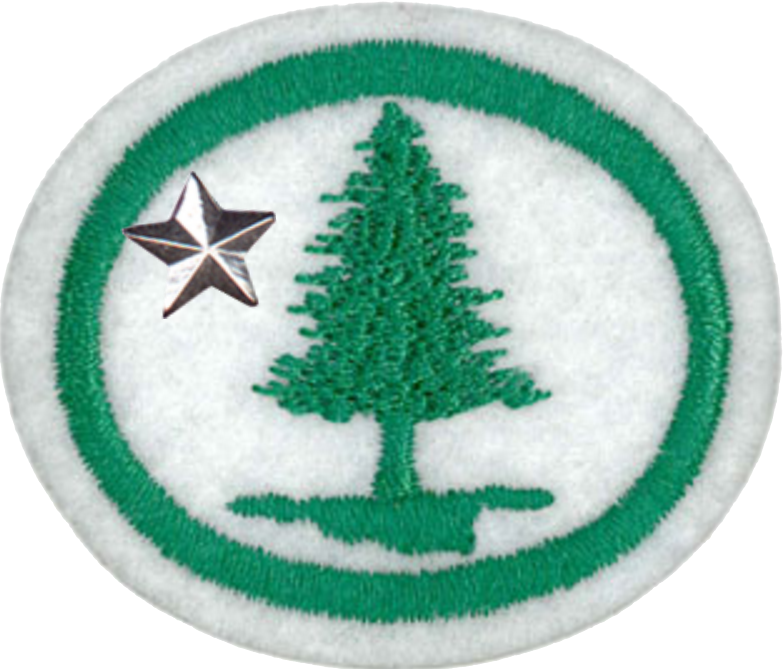Difference between revisions of "AY Honors/Trees - Advanced/Answer Key/es"
(Created page with "</noinclude><noinclude>") |
|||
| (32 intermediate revisions by 2 users not shown) | |||
| Line 1: | Line 1: | ||
| − | + | {{HonorSubpage}} | |
| − | |||
| − | {{ | ||
| − | |||
| − | |||
| − | |||
| − | |||
| − | |||
| − | |||
| − | |||
| − | }} | ||
| − | |||
| − | |||
<section begin="Body" /> | <section begin="Body" /> | ||
{{ansreq|page={{#titleparts:{{PAGENAME}}|2|1}}|num=1}} | {{ansreq|page={{#titleparts:{{PAGENAME}}|2|1}}|num=1}} | ||
| Line 22: | Line 10: | ||
<noinclude></noinclude> | <noinclude></noinclude> | ||
<!-- 2. Recolectar, identificar, prensar y montar hojas de 35 diferentes especies de árboles. --> | <!-- 2. Recolectar, identificar, prensar y montar hojas de 35 diferentes especies de árboles. --> | ||
| − | {{: | + | {{:AY Honors/Leaf_collection/es}} |
<noinclude></noinclude> | <noinclude></noinclude> | ||
| Line 46: | Line 34: | ||
{{CloseReq}} <!-- 3e --> | {{CloseReq}} <!-- 3e --> | ||
{{ansreq|page={{#titleparts:{{PAGENAME}}|2|1}}|num=3f}} | {{ansreq|page={{#titleparts:{{PAGENAME}}|2|1}}|num=3f}} | ||
| − | <noinclude></noinclude> | + | <noinclude></noinclude><noinclude></noinclude> |
| − | |||
| − | <noinclude></noinclude> | ||
{{CloseReq}} <!-- 3f --> | {{CloseReq}} <!-- 3f --> | ||
{{ansreq|page={{#titleparts:{{PAGENAME}}|2|1}}|num=3g}} | {{ansreq|page={{#titleparts:{{PAGENAME}}|2|1}}|num=3g}} | ||
| Line 75: | Line 61: | ||
{{ansreq|page={{#titleparts:{{PAGENAME}}|2|1}}|num=4}} | {{ansreq|page={{#titleparts:{{PAGENAME}}|2|1}}|num=4}} | ||
<noinclude></noinclude> | <noinclude></noinclude> | ||
| − | <!-- 4. | + | <!-- 4. Hacer lo siguiente: --> |
| − | |||
| − | |||
| − | |||
| − | + | <!-- a. Describir las ventajas en el uso del latín o los nombres científicos. --> | |
{{clear}} | {{clear}} | ||
| Line 86: | Line 69: | ||
{{clear}} | {{clear}} | ||
| − | + | {{clear}} | |
| − | + | ||
| + | <!-- b. ¿Qué indican las dos partes de un nombre científico? --> | ||
<noinclude></noinclude> | <noinclude></noinclude> | ||
| Line 93: | Line 77: | ||
{{ansreq|page={{#titleparts:{{PAGENAME}}|2|1}}|num=5}} | {{ansreq|page={{#titleparts:{{PAGENAME}}|2|1}}|num=5}} | ||
<noinclude></noinclude> | <noinclude></noinclude> | ||
| − | <!-- 5. | + | <!-- 5. Mencionar seis familias de árboles en la clase angiospermas y tres familias en la clase gimnospermas. --> |
| − | |||
| − | |||
| − | |||
| − | |||
| − | |||
| − | |||
| − | |||
| − | |||
| − | |||
| − | |||
| − | |||
| − | |||
| − | |||
| − | |||
| − | |||
| − | |||
| − | |||
{{clear}} | {{clear}} | ||
| Line 118: | Line 85: | ||
{{ansreq|page={{#titleparts:{{PAGENAME}}|2|1}}|num=6}} | {{ansreq|page={{#titleparts:{{PAGENAME}}|2|1}}|num=6}} | ||
<noinclude></noinclude> | <noinclude></noinclude> | ||
| − | <!-- 6. | + | <!-- 6. Conocer y describir la función de las hojas en la vida de un árbol. --> |
| − | |||
<noinclude></noinclude> | <noinclude></noinclude> | ||
| Line 125: | Line 91: | ||
{{ansreq|page={{#titleparts:{{PAGENAME}}|2|1}}|num=7}} | {{ansreq|page={{#titleparts:{{PAGENAME}}|2|1}}|num=7}} | ||
<noinclude></noinclude> | <noinclude></noinclude> | ||
| − | <!-- 7. | + | <!-- 7. Mencionar las familias de árboles en su área que tienen hojas opuestas. --> |
| − | |||
{{clear}} | {{clear}} | ||
| Line 134: | Line 99: | ||
{{ansreq|page={{#titleparts:{{PAGENAME}}|2|1}}|num=8}} | {{ansreq|page={{#titleparts:{{PAGENAME}}|2|1}}|num=8}} | ||
<noinclude></noinclude> | <noinclude></noinclude> | ||
| − | <!-- 8. | + | <!-- 8. Definir los siguientes términos: --> |
<noinclude></noinclude> | <noinclude></noinclude> | ||
{{ansreq|page={{#titleparts:{{PAGENAME}}|2|1}}|num=8a}} | {{ansreq|page={{#titleparts:{{PAGENAME}}|2|1}}|num=8a}} | ||
| Line 149: | Line 114: | ||
{{CloseReq}} <!-- 8d --> | {{CloseReq}} <!-- 8d --> | ||
{{ansreq|page={{#titleparts:{{PAGENAME}}|2|1}}|num=8e}} | {{ansreq|page={{#titleparts:{{PAGENAME}}|2|1}}|num=8e}} | ||
| − | <noinclude></noinclude> | + | <noinclude></noinclude><noinclude></noinclude> |
| − | |||
| − | <noinclude></noinclude> | ||
{{CloseReq}} <!-- 8e --> | {{CloseReq}} <!-- 8e --> | ||
{{ansreq|page={{#titleparts:{{PAGENAME}}|2|1}}|num=8f}} | {{ansreq|page={{#titleparts:{{PAGENAME}}|2|1}}|num=8f}} | ||
| Line 173: | Line 136: | ||
{{ansreq|page={{#titleparts:{{PAGENAME}}|2|1}}|num=8l}} | {{ansreq|page={{#titleparts:{{PAGENAME}}|2|1}}|num=8l}} | ||
<noinclude></noinclude> | <noinclude></noinclude> | ||
| − | |||
<noinclude></noinclude> | <noinclude></noinclude> | ||
| Line 180: | Line 142: | ||
{{ansreq|page={{#titleparts:{{PAGENAME}}|2|1}}|num=9}} | {{ansreq|page={{#titleparts:{{PAGENAME}}|2|1}}|num=9}} | ||
<noinclude></noinclude> | <noinclude></noinclude> | ||
| − | <!-- 9. | + | <!-- 9. ¿Qué familias de árboles tiene: --> |
<noinclude></noinclude> | <noinclude></noinclude> | ||
{{ansreq|page={{#titleparts:{{PAGENAME}}|2|1}}|num=9a}} | {{ansreq|page={{#titleparts:{{PAGENAME}}|2|1}}|num=9a}} | ||
| − | <noinclude></noinclude> | + | <noinclude></noinclude><noinclude></noinclude> |
| − | |||
| − | <noinclude></noinclude> | ||
{{CloseReq}} <!-- 9a --> | {{CloseReq}} <!-- 9a --> | ||
{{ansreq|page={{#titleparts:{{PAGENAME}}|2|1}}|num=9b}} | {{ansreq|page={{#titleparts:{{PAGENAME}}|2|1}}|num=9b}} | ||
| − | <noinclude></noinclude> | + | <noinclude></noinclude><noinclude></noinclude> |
| − | |||
| − | <noinclude></noinclude> | ||
{{CloseReq}} <!-- 9b --> | {{CloseReq}} <!-- 9b --> | ||
{{ansreq|page={{#titleparts:{{PAGENAME}}|2|1}}|num=9c}} | {{ansreq|page={{#titleparts:{{PAGENAME}}|2|1}}|num=9c}} | ||
| − | <noinclude></noinclude> | + | <noinclude></noinclude><noinclude></noinclude> |
| − | |||
| − | <noinclude></noinclude> | ||
{{CloseReq}} <!-- 9c --> | {{CloseReq}} <!-- 9c --> | ||
{{ansreq|page={{#titleparts:{{PAGENAME}}|2|1}}|num=9d}} | {{ansreq|page={{#titleparts:{{PAGENAME}}|2|1}}|num=9d}} | ||
| − | <noinclude></noinclude> | + | <noinclude></noinclude><noinclude></noinclude> |
| − | |||
| − | <noinclude></noinclude> | ||
{{CloseReq}} <!-- 9d --> | {{CloseReq}} <!-- 9d --> | ||
{{ansreq|page={{#titleparts:{{PAGENAME}}|2|1}}|num=9e}} | {{ansreq|page={{#titleparts:{{PAGENAME}}|2|1}}|num=9e}} | ||
| − | <noinclude></noinclude> | + | <noinclude></noinclude><noinclude></noinclude> |
| − | |||
| − | <noinclude></noinclude> | ||
{{CloseReq}} <!-- 9e --> | {{CloseReq}} <!-- 9e --> | ||
{{ansreq|page={{#titleparts:{{PAGENAME}}|2|1}}|num=9f}} | {{ansreq|page={{#titleparts:{{PAGENAME}}|2|1}}|num=9f}} | ||
| − | <noinclude></noinclude> | + | <noinclude></noinclude><noinclude></noinclude> |
| − | |||
| − | <noinclude></noinclude> | ||
{{CloseReq}} <!-- 9f --> | {{CloseReq}} <!-- 9f --> | ||
{{ansreq|page={{#titleparts:{{PAGENAME}}|2|1}}|num=9g}} | {{ansreq|page={{#titleparts:{{PAGENAME}}|2|1}}|num=9g}} | ||
| − | <noinclude></noinclude> | + | <noinclude></noinclude><noinclude></noinclude> |
| − | |||
| − | <noinclude></noinclude> | ||
{{CloseReq}} <!-- 9g --> | {{CloseReq}} <!-- 9g --> | ||
{{ansreq|page={{#titleparts:{{PAGENAME}}|2|1}}|num=9h}} | {{ansreq|page={{#titleparts:{{PAGENAME}}|2|1}}|num=9h}} | ||
<noinclude></noinclude> | <noinclude></noinclude> | ||
| − | |||
<noinclude></noinclude> | <noinclude></noinclude> | ||
| Line 226: | Line 173: | ||
{{ansreq|page={{#titleparts:{{PAGENAME}}|2|1}}|num=10}} | {{ansreq|page={{#titleparts:{{PAGENAME}}|2|1}}|num=10}} | ||
<noinclude></noinclude> | <noinclude></noinclude> | ||
| − | <!-- 10. | + | <!-- 10. Identificar 10 árboles de hoja caduca por sus características de «invierno» (características que no sean las hojas) como ramas y el capullo, forma características y hábitos de crecimiento. --> |
| − | |||
| − | |||
| − | + | {{clear}} | |
| − | |||
| − | |||
| − | + | {{clear}} | |
| − | |||
| − | |||
| − | |||
| − | |||
| − | |||
| − | + | {{clear}} | |
| − | |||
| − | |||
| − | + | {{clear}} | |
| − | + | {{clear}} | |
| − | + | {{clear}} | |
| − | |||
| − | |||
| − | + | {{clear}} | |
| − | |||
| − | + | {{clear}} | |
| − | |||
| − | |||
| − | |||
| − | |||
| − | |||
| − | + | {{clear}} | |
| − | |||
| − | |||
| − | |||
| − | |||
| − | |||
| − | |||
| − | |||
| − | |||
| − | |||
| − | + | {{clear}} | |
| − | |||
<noinclude></noinclude> | <noinclude></noinclude> | ||
{{CloseReq}} <!-- 10 --> | {{CloseReq}} <!-- 10 --> | ||
<noinclude></noinclude> | <noinclude></noinclude> | ||
| − | == | + | ==Referencias== |
| − | |||
<noinclude></noinclude> | <noinclude></noinclude> | ||
| − | + | {{CloseHonorPage}} | |
Latest revision as of 00:27, 15 July 2022
Nivel de destreza
3
Año
1949
Version
04.05.2024
Autoridad de aprobación
Asociación General
1
Para consejos e instrucciones, véase Árboles.
2
A menos que ya esté muy familiarizado con los árboles en su área, tendrá que obtener una guía de campo sobre los árboles para esta actividad. ¡Ilustrar todas las especies de árboles que pueden surgir es mucho más allá del alcance de un solo capítulo en este libro de respuesta!
Lo mejor es recoger las hojas en la primavera o principios del verano antes de que los insectos y el tiempo hayan tenido la oportunidad de dañarlas. Pero, si lo prefiere, puede tratar de recogerlas en el otoño, cuando los colores cambian.
Cuando salga a recoger hojas, tome la guía de campo. Es importante identificar las hojas a la misma vez que los recoja, porque puede buscar por otras cosas además que las hojas para identificarlas. La corteza, el medio ambiente, brotes y la forma del árbol son todas pistas importantes para saber la especie del árbol. Esto es especialmente importante si quiere diferenciar entre los árboles del mismo género (como el cerezo negro americano, cerezo pin [de fuego], cerezo de Virgina [capulín], etc.). De hecho, la identificación apropiada puede no ser posible solamente por la hoja.
Recoja hojas que son típicas para el árbol, pero recuerde - las hojas más pequeñas van a ser más fáciles para que quepan en un papel de tamaño A4.
Presione las hojas por medio de colocándolas en una clase de papel absorbente - periódico, toallas de papel, pañuelo, etc. Luego, colóquelas bajo varios libros o en una prensa de hojas. Después de dos semanas, las hojas deben ester aplanadas, secas y bien conservadas. Los árboles de hoja perenne como el pícea y el abeto son difíciles de conservar de esta forma porque las acículas se caen. Los Conquistadores que son más ambiciosos tal vez quieran envolver las hojas en epoxi, ya que conserva el color y elimina la necesidad de presionarlas (es decir, las hojas también conservan sus características tridimensionales).
Una vez que las hojas han sido prensadas, se pueden pegar, poner con cinta adhesiva o laminar en papel de cuaderno. Utilice hojas sueltas si desea cambiar sus posiciones después. También puede colocar las hojas prensadas entre dos hojas de papel encerado, cubrir con una toalla y plancharlas.
3
3a
3b
3c
3d
3e
3f
3g
3h
3i
3j
3k
3l
4
5
6
7
8
8a
8b
8c
8d
8e
8f
8g
8h
8i
8j
8k
8l
9
9a
9b
9c
9d
9e
9f
9g
9h
10


